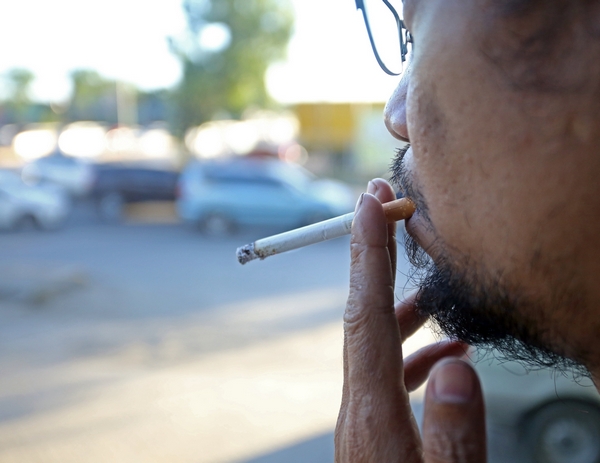
According to the Department of Health, only 3 out 53 Cebu towns and cities have complied with Executive Order 26, the government’s smoking ban order. CDN PHOTO/LITO TECSON
Poor Compliance of EO 26 NOTED
LOCAL government units in Cebu should pass their own anti-smoking ordinance so that they can effectively implement and supplement Executive Order (EO) No. 26, which is the nationwide ban on smoking in public and enclosed spaces.
Ligaya Moneva, Department of Health in Central Visayas (DOH-7) information officer, said this amid the Health Department’s data which showed that only 3 out of 53 cities and municipalities in Cebu Province had been compliant or had effectively and strictly implemented the smoking ban in their areas.
“They should come up and implement their own ordinance, because even if we have EO 26, but the law is very broad. For an LGU to apprehend, penalize and implement sanctions, they should have their own ordinance. Though the Philippine National Police (PNP) can apprehend directly, but it’s better if they have a smoke-free ordinance to make it more specific,” said Moneva.
EO 26 which is also known as Providing for the Establishment of Smoke-Free Environments in Public and Enclosed Places, was signed by President Duterte last May 16, 2017 and took effect in the month of July.
Moneva said that only the municipalities of Tuburan, Consolacion and Argao have already passed a smoke-free ordinance which is compliant with EO 26.
She said an LGU having its own anti-smoking ordinance is the best way to implement the EO banning smoking in public places and establishments.
She said that through an ordinance, the LGU could specify the different violations and the corresponding penalties especially that EO 26 is only specific to public and enclosed spaces.
“Though, some LGUs are already crafting their own ordinance, which is now in different levels of readings in their Sanggunian. The ordinance can also help in increasing their tax collection, by imposing higher taxes to establishments that sell cigarettes,” she added.
She also noted that the EO did not specify or include the prohibition of the use of vape or e-cigarettes, which could only be supplemented through an ordinance.
Violators of EO 26 may be meted with fines ranging from P500 up to P10,000 while those caught selling and advertising the use of cigarettes may get bigger penalties.
Aside from that, the anti-smoking law also prohibits the sale of cigarettes to minors.
The EO 26 also mandates the LGUs to create their own anti-smoking task force that would implement the anti-smoking ban.
Moneva also clarified that the DOH-7 could not impose sanctions to LGUs who would not comply with the smoking ban order by passing their own smoke-free ordinance.
She said that the DOH-7 is coordinating with the Department of Interior and Local Government (DILG) to help in urging LGUs and with the Civil
Service Commission (CSC) for other government agencies in adopting their own smoke-free policy.
“Especially that E.O. 26 is co-terminus with the President, so we want this to become permanent through an ordinance for sustainability,” she said.
Moneva said that 240 Filipinos die from smoke-related diseases a day as a way to highlight the risk of smoking especially to a Filipino.
As for those provinces complying with the EO 26, according to DOH-7, Negros Oriental has the highest compliance rate with 80 percent while second is Siquijor with a 50 percent compliance rate.
Cebu, on the other hand, has only a 10 percent compliance rate and Bohol with only 2 percent.
Aside from that, the DOH-7 has also created last week the Regional Tobacco Control Network (RTCN) that will help the department in educating people on the ill effects of smoke inhalation.
The RTCN will also help in encouraging LGUs and government agencies to implement their own smoke-free policy.
RTCN is composed of local chief executives from different LGUs, the DOH, different health facilities and other government agencies.